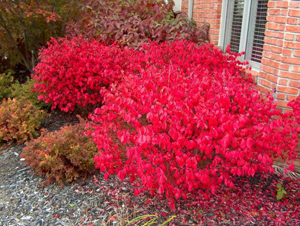Cultivars of popular ornamental woody plants that are being sold in the United States as non-invasive are probably anything but, according to an analysis by botanical researchers published in the October issue of BioScience.

Tiffany M. Knight, PhD, associate professor of biology in Arts & Sciences at Washington University in St. Louis, and her co-authors at the Chicago Botanic Garden write that the claims of environmental safety are in most cases based on limited demographic evidence — such as seed production — that they may underestimate the plants’ invasive potential.
What is more, the offspring of cultivars do not usually “breed true” and may be more fecund than their parents, especially if they cross with plants from nearby wild populations.
“I don’t wish to vilify the horticultural industry or to imply they are trying to market plants as safe that clearly are not just to make a quick buck,” Knight says. “Many in the industry are very concerned about invasive plant issues.
“Instead, I want to encourage a conservative approach to plant sales. A cultivar should be considered guilty until proven innocent. And horticultural scientists should conduct more thorough breed and demographic studies on cultivars so that they are not marketed as safe before the science is complete.”

Many invasive plants were once ornamental cultivars because the characteristics that the nursery and landscaping industries look for are the same ones that make a plant potentially invasive — being adaptable to wide range of conditions, forming dense stands good for erosion control, and having a long flowering period, for example.
In recent years, some nursery and horticultural suppliers have responded by creating cultivars of top-selling plants that produce reduced numbers of viable seed and are advertised as “safe to natural areas.” Such cultivars of Japanese barberry, buckthorn, and burning bush are now widely sold, as they avoid bans on growing invasive species.

Yet simple population modeling demonstrates that reductions of even 95 percent in the number of viable seed will leave a long-lived species quite capable of spreading — and many of the new cultivars do not achieve even that much of a reduction.
More sophisticated modeling would likely reveal even stronger invasive potential of the “safe” cultivars. Knight and her co-authors conclude that, for now, only completely sterile cultivars can be considered truly safe without further testing, and that other types should be tested for breeding true and having a low-growth rate before they are sold as non-invasive.
Editor’s note: This release has been adapted from one issued by the American Institute of Biological Sciences and is available online.